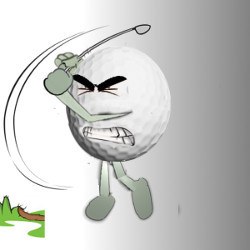- In golf, the term “bogey golfer” refers to a player whose average score on a course is typically around bogey or one stroke over par on each hole. A bogey golfer is considered to have a handicap of around 18, as the USGA Handicap System establishes bogey as the standard level of play for golfers.
- Bogey golfers are often recreational or amateur players who have developed a level of skill and consistency but have not yet reached the level of shooting consistently under par or at par. They typically have a mix of pars, bogeys, and occasionally higher scores, with the occasional birdie or better.
Bogey golfers are still capable of playing enjoyable rounds of golf and can have competitive matches against other golfers of similar skill levels. They may have strengths in certain aspects of the game, such as driving, iron play, or putting, but may still have areas for improvement.
Improving as a bogey golfer often involves refining course management, enhancing consistency in ball striking, and honing short game skills. Working on shot accuracy, developing a reliable putting stroke, and understanding strategic shot selection can contribute to lowering scores and eventually transitioning to shooting below bogey consistently.
Many golfers start as bogey golfers and gradually progress to shooting lower scores as they gain experience, practice, and refine their skills. The term “bogey golfer” is a way to categorize a player's skill level and establish a benchmark for their scoring ability.
Often used to mean a golfer who averages a bogey per hole and shoots around 90 for most rounds. The USGA defines a Bogey Golfer as a player with a Handicap Index of 17.5 – 22.4 (men) or 21.5 – 26.4 (women).






